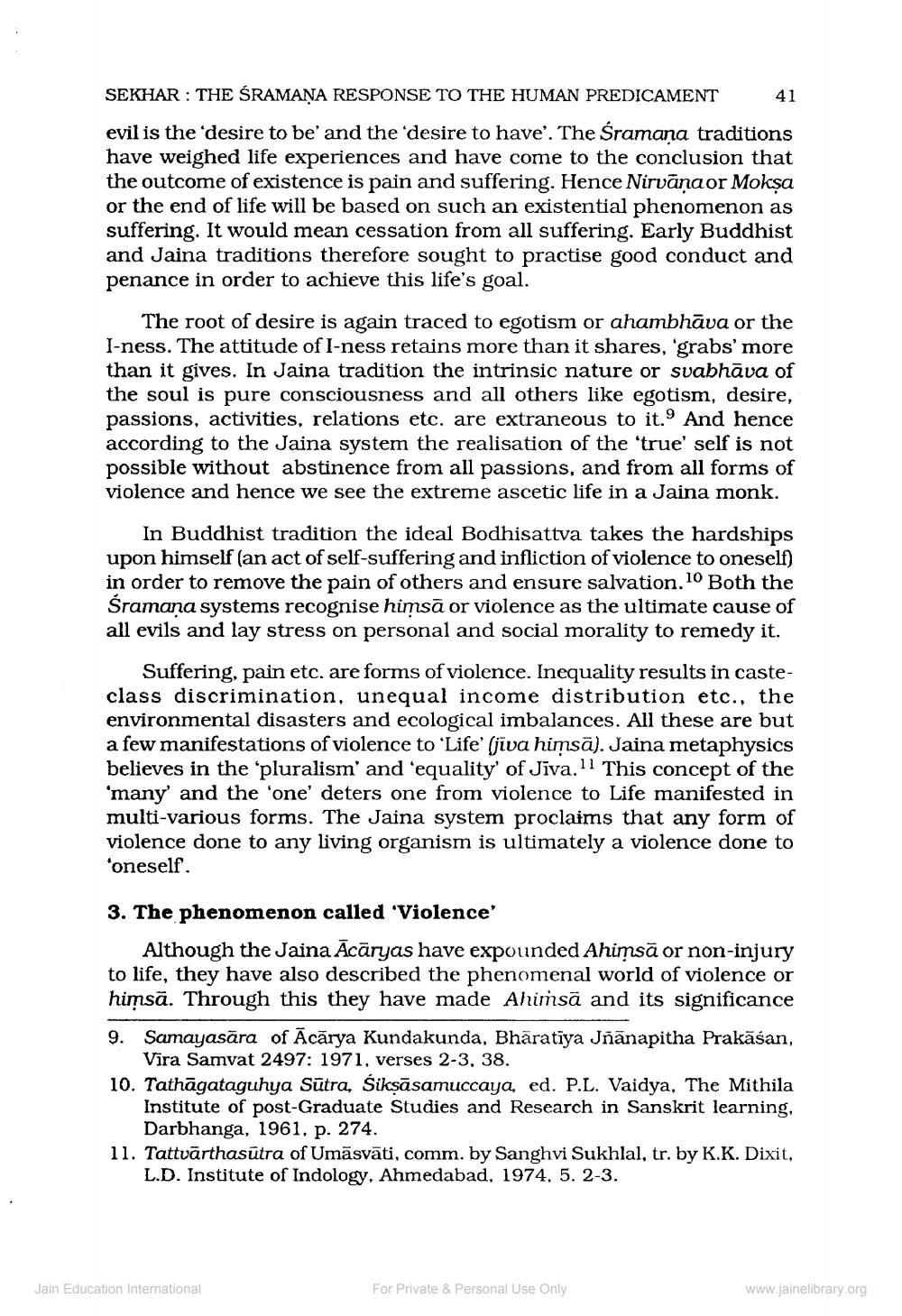________________
SEKHAR: THE ŚRAMANA RESPONSE TO THE HUMAN PREDICAMENT
evil is the 'desire to be' and the 'desire to have'. The Śramana traditions have weighed life experiences and have come to the conclusion that the outcome of existence is pain and suffering. Hence Nirvana or Mokṣa or the end of life will be based on such an existential phenomenon as suffering. It would mean cessation from all suffering. Early Buddhist and Jaina traditions therefore sought to practise good conduct and penance in order to achieve this life's goal.
The root of desire is again traced to egotism or ahambhāva or the I-ness. The attitude of I-ness retains more than it shares, 'grabs' more than it gives. In Jaina tradition the intrinsic nature or svabhava of the soul is pure consciousness and all others like egotism, desire, passions, activities, relations etc. are extraneous to it.9 And hence according to the Jaina system the realisation of the 'true' self is not possible without abstinence from all passions, and from all forms of violence and hence we see the extreme ascetic life in a Jaina monk.
41
In Buddhist tradition the ideal Bodhisattva takes the hardships upon himself (an act of self-suffering and infliction of violence to oneself) in order to remove the pain of others and ensure salvation. 10 Both the Śramana systems recognise himsā or violence as the ultimate cause of all evils and lay stress on personal and social morality to remedy it.
Suffering, pain etc. are forms of violence. Inequality results in casteclass discrimination, unequal income distribution etc., the environmental disasters and ecological imbalances. All these are but a few manifestations of violence to 'Life' (jiva himsā). Jaina metaphysics believes in the 'pluralism' and 'equality' of Jiva.11 This concept of the 'many' and the 'one' deters one from violence to Life manifested in multi-various forms. The Jaina system proclaims that any form of violence done to any living organism is ultimately a violence done to 'oneself.
3. The phenomenon called 'Violence'
Although the Jaina Acāryas have expounded Ahimsā or non-injury to life, they have also described the phenomenal world of violence or himsā. Through this they have made Ahimsa and its significance
9. Samayasara of Acarya Kundakunda, Bharatiya Jñanapitha Prakasan, Vira Samvat 2497: 1971, verses 2-3, 38.
10. Tathāgataguhya Sutra, Sikṣāsamuccaya, ed. P.L. Vaidya, The Mithila Institute of post-Graduate Studies and Research in Sanskrit learning, Darbhanga, 1961, p. 274.
11. Tattvärthasutra of Umäsvāti, comm. by Sanghvi Sukhlal, tr. by K.K. Dixit, L.D. Institute of Indology, Ahmedabad, 1974, 5. 2-3.
Jain Education International
For Private & Personal Use Only
www.jainelibrary.org




